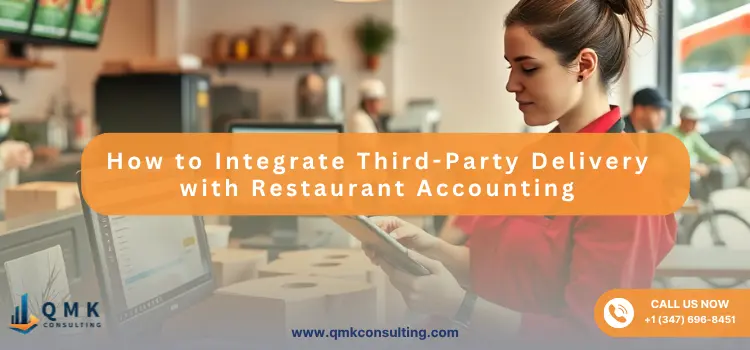
July 28, 2025 |Accounting & Bookkeeping


In today’s booming restaurant landscape, third-party delivery platforms like Uber Eats, DoorDash, and Grubhub have become as essential as your ovens and kitchens. They’re not just another sales channel—they’re a lifeline for growth, customer reach, and even survival. But many operators miss a massive opportunity: integrating these channels with smart, seamless accounting. And when you get this right, the transformation for your business is profound.
So let’s talk—really talk—about why delivery-channel integration matters more than ever, how you can avoid costly mistakes, and the strategies you need to stay ahead in a competitive, margin-squeezed industry.
If you own or manage a restaurant in 2025, you know this story well. Online orders are now the norm. You wake up to emails about last night’s DoorDash rush, check your POS to see how Uber Eats performed, and maybe scan a spreadsheet someone cobbled together to reconcile your delivery payouts.
Here’s the catch: every third-party platform handles money differently. You’ve got staggered deposits, scattered sales receipts, random fees, and the ever-mysterious “adjustments” that seem to appear out of nowhere. Multiply this by two, three, or more platforms, and without proper integration, your bookkeeping can quickly become a nightmare.
But here’s what even savvy operators often miss:
Every single missed deposit, mistyped refund, or forgotten commission isn’t just a bookkeeping error—it’s profit drained from your business. Unchecked, this can mean the difference between a strong, growing restaurant and one that’s always scrambling to catch up.
Let’s be honest—many operators still hand-key delivery sales, fees, and tips into Excel or QuickBooks. Why? Because most restaurant accounting systems aren’t built for the chaos of third-party orders.
Here’s the human reality:
It adds up—fast.
Seamlessly syncing third-party delivery platforms with your back office isn’t just for big chains anymore. Today’s cloud-based POS and accounting systems (think Toast, Square, and QuickBooks Online) can pull in every order, deposit, and fee in real time. But it takes the right strategy and expertise to set this up so nothing falls through the cracks.
Here’s what true integration looks like in best-in-class New York City restaurants (and what QMK Consulting implements for franchises and independents coast-to-coast):
What happens when you get this right? Let’s paint the picture.
Suppose you run three locations in New York—each using Uber Eats, DoorDash, and Grubhub. With manual tracking, you might spend hours every week just logging into dashboards, copying numbers, and hoping you don’t miss an adjustment. But with integrated accounting:
This is how owners turn accounting from a burden into a competitive weapon in 2025’s tough restaurant market.
Let’s get specific about some of the biggest traps:
1. Ignoring Platform Promotions: Many delivery services run customer promos and deduct the cost from your payout. If these aren’t properly tracked, you’ll never see the true impact on margins.
2. Failing to Reconcile Weekly: With multiple platforms, payment errors are more common than you think. Weekly reconciliation—done automatically—ensures nothing slips through.
3. Wrongly Categorizing Fees: Lumping everything as “merchant expense” muddies your P&L and hides where costs are ballooning. Smart categorization is pivotal.
4. Not Separating Refunds and Chargebacks: Customer refunds and chargebacks hit revenue and expenses differently. Track them separately to see the real effect on profits.
5. Not Updating Menu Pricing: Delivery fees keep changing. Failing to adjust your menu or delivery pricing with current costs means you could sell popular items at a loss.
With the right systems and expert support, these are all problems you can eliminate—fast.
You need more than basic bookkeeping—you need advisors who understand the unique demands of the modern restaurant, especially with franchises operating across multiple locations and brands. Here’s what sets QMK Consulting apart:
Tired of lost profits, accounting headaches, and not knowing where your money really goes?
Let’s change that—today.
Book your FREE profit & cash flow analysis with Mohamed Karmous, franchise accounting expert and restaurant accounting advisor at QMK Consulting.
You’ll get personalized, actionable insights from the region’s top specialist in franchise and restaurant accounting—right here in New York City.
We’ll show you exactly how to integrate third-party ordering, optimize your margins, and future-proof your growth in 2025 and beyond.
Ready for clarity, confidence, and bigger profits? Contact QMK Consulting—New York City’s franchise accounting leaders. Your booking link is just a click away!